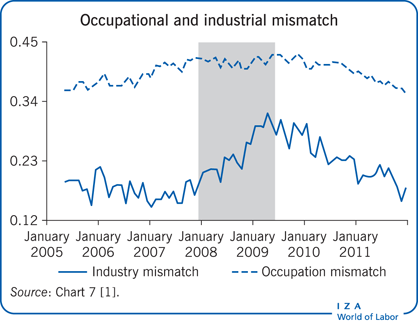Elevator pitch
Persistent unemployment after recessions and the policies required to bring it down are the subject of an ongoing debate. One view suggests there are fundamental changes in the labor market that imply a long-term higher rate of unemployment, requiring the implementation of structural policy reforms. The alternative view is that the slow recovery of the economy is due to cyclic reasons coming from lack of demand which prevents unemployment from falling quickly. Knowing whether higher unemployment is caused by structural change in the labor market or whether the problem is cyclic determines how effective policy can be in addressing the problem.

Key findings
Pros
Most of the large increase in unemployment during the 2007−2009 recession appears to be cyclic, not structural.
Those industries that experienced the most significant increase in unemployment during the recession also experienced the largest declines as the unemployment rate fell.
Demographic groups experiencing greater unemployment during a recession are those employed in highly cyclical industries.
The degree of mismatch across industries and occupations is pro-cyclic, rising during the recession and falling during the recovery.
Evidence suggests mean wages decline during a recession indicating lower labor demand rather than a structural shift in labor supply.
Cons
Vacancy rates are high relative to unemployment rates during the recovery from a recession.
Labor mobility is lower during recessions.
The ratio of long-term unemployed to the total number of unemployed rose dramatically in the 2007−2009 recession.
It is difficult to determine whether a recession is cyclic or structural while it is underway, but there are indicators that make this possible.